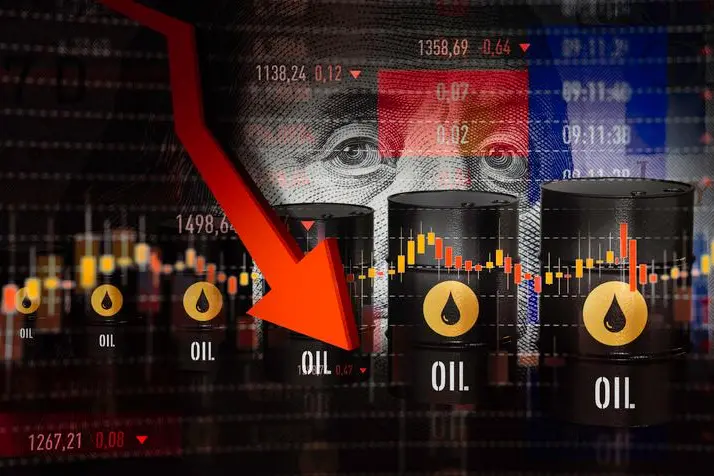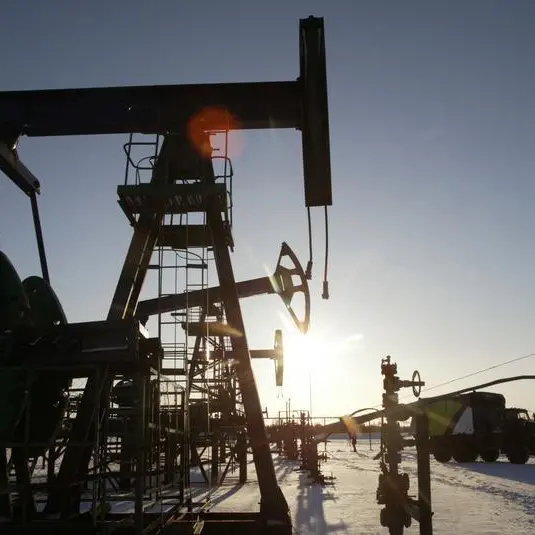PHOTO
Today marks one year since the Russian invasion of Ukraine and there is no obvious route to an end for the conflict.
US President Joe Biden promised “unwavering support” to Ukraine’s democracy in a surprise visit to the capital Kyiv this week, and no vision for peace was outlined by Russian President Vladimir Putin in his annual address, which means the war is likely to factor in the global markets for the remainder of 2023 at least.
So far, the United Nations has put the recorded Ukrainian civilian death toll at 8,000, with the actual figure likely to be much higher. Estimates vary on the actual number of military deaths, but some published this week suggest it could be as high as 150,000 military losses on each side.
On top of that, nearly 8 million people have been forced to seek refuge outside of Ukraine, while close to 6 million are internally displaced.
Alongside the terrible human costs of the war, market uncertainty and geopolitics including sanctions have driven volatility – impacting citizens inside Russia, as well as across Europe and globally in the form of oil and gas prices and supply chain difficulties caused by the blocking of some of Ukraine’s export routes, with the holding up of ships carrying wheat of particular concern to developing countries in the MENA region and Africa.
As soon as the invasion began, there was an immediate apparent impact on oil prices.
According to Refinitiv data, on 6th February 2022, the Brent Crude oil price was $80.99 per barrel, then began a steady upward trajectory. A spike began when the invasion began on 24th February, reaching a peak of $127.98 per barrel on 8th March. At this point, the initial phases of the fighting were at its fiercest and had included several failed evacuations of civilians during the siege of Mariupol.
The price fell to $84 per barrel on 12 September, around the time Ukraine recaptured large amounts of territory in the Kharkiv Oblast and reached its lowest point of the past year on 9th December at $76.10.
Last year and this year
For some experts, the greatest impact of the war was on gas markets, but others point to the spike of oil prices following the invasion as evidence that it has been a key driver.
Looking ahead, experts believe it will continue to be a driver, but that is one of a number of factors, including the reopening of China post-COVID-19, the macroeconomic outlook and OPEC+ production cuts.
Dr Carole Nakhle, CEO of energy research and advisory company Crystol Energy, said: “The conflict in Ukraine has played a bigger role in gas markets than oil markets, given the greater liquidity of the latter and the ease with which trade flow can be redirected.”
Initial fears of major supply disruptions, with potential for the loss of production of between three and five million barrels per day (Mb/d), did not come to pass, but the macroeconomic outlook, including China, and OPEC+ production cuts were important drivers, Nakhle said.
“The above factors will continue to shape the market with China playing a more notable role. However, it also depends on the development with the conflict in Ukraine,” she said.
“Russia can still activate the ‘nuclear’ option and cut its supplies significantly and which in turn will result in price spikes and greater volatility.”
For Ehsan Khoman, head of emerging markets research at MUGF, it was China, not Russia, that was the largest oil shock of 2022.
“More Chinese-led demand was lost than Russian-led supply decoupled,” he said.
The Chinese economy was overwhelmed by policies leading to prolonged and stern COVID-19 lockdowns, he added, as well the acute deleveraging of its property sector, drove recent oil price weakness.
Aggressive central bank rate hikes also slowed demand growth and strengthened the US dollar which further capped energy prices. Oil markets are now priced and destocked for a recession that he said was like to be ‘mild, at best’.
Return of the Chinese dragon
MUFG’s Khoman said China’s COVID-19 and property sector policies have been reversed at “astounding speed”, with the strength of the Chinese consumer and further losses in Russian exports supporting prices this year in the bank’s view.
“The biggest risk is that against extremely low inventories and thin spare capacity, it will not take much for oil demand growth to hit the wall of supply scarcity,” he said.
“There is a risk that as China fully reopens later this year that the global oil markets may undergo the same pressures as what the European economy experienced with gas in 2022.”
Analysts of private banking group Lombard Odier said after the initial oil price spike, slowing global growth and demand reduction in China saw prices dip below pre-Ukraine invasion levels from November onwards.
In response to questions from Zawya, the bank said: “Demand prospects now constitute a key driver of oil prices. Meanwhile, the conflict’s impact has become more limited than many had expected, with Russian oil production and exports remaining resilient despite sanctions, even though the bulk of shipments have been rerouted from Europe.”
The bank’s forecast for the 2023 price from last year remain largely unchanged, as it projects $85 per barrel in the first quarter, increasing to $90-%95 per barrel for the remainder of the year.
“We see oil producers’ response to increased demand as the main driver of prices in 2023 and beyond,” it said.
Price floor of $75
Regarding the supply side, the war and resulting sanctions on Russia will continue to be the main, if not the primary driver of oil prices, especially as the market awaits the impact of sanctions implemented on 5th February, Lombard Odier said.
Russia has already announced a production cut from March which created some price volatility, the bank added, saying further Russian cuts are a major uncertainty, as is OPEC+’s ‘proactive management’ of production.
“Acknowledging the low inventories, we expect oil markets pace into deficit in Q2 2023. At the same time, we expect OPEC+ to continue to manage production. In this context, a $75 per barrel price required to balance Saudi Arabia’s budget could prove a price floor.”
(Reporting by Imogen Lillywhite; editing by Seban Scaria)





















